Charcoal drawing is a versatile technique treasured for its dramatic range of tones and ability to capture the essence of a subject with vigor and sensitivity. Landscape drawing with charcoal can be particularly rewarding, as it allows for capturing the drama of natural vistas with the medium’s broad expressive potential. Advanced techniques in charcoal landscape drawing can elevate an artist’s work from simply representing a scene to invoking the mood, atmosphere, and grandeur of the natural world.
Utilizing the Full Spectrum of Charcoal Tones
Exploiting the Dynamic Range
One of charcoal’s greatest strengths is its dynamic tonal range. From the deepest blacks to the most subtle grays, charcoal can be manipulated to capture the full spectrum of light within a landscape. Artists should not shy away from the extremes; bold use of dark tones can add depth and weight, while lively highlights can create a sense of light and space. This dynamic use of contrast can turn a flat image into a three-dimensional experience.
Graduated Toning for Atmospheric Perspective
Achieving a sense of atmospheric perspective can add depth to a landscape drawing. This means that objects in the distance appear lighter and less defined than those in the foreground due to the scattering of light by particles in the air. By deliberately graduating tones from dark in the foreground to light in the background, a sense of depth emerges. Artists can also use charcoal dust on a blending stump to softly transition between these tones, emphasizing the illusion of depth.
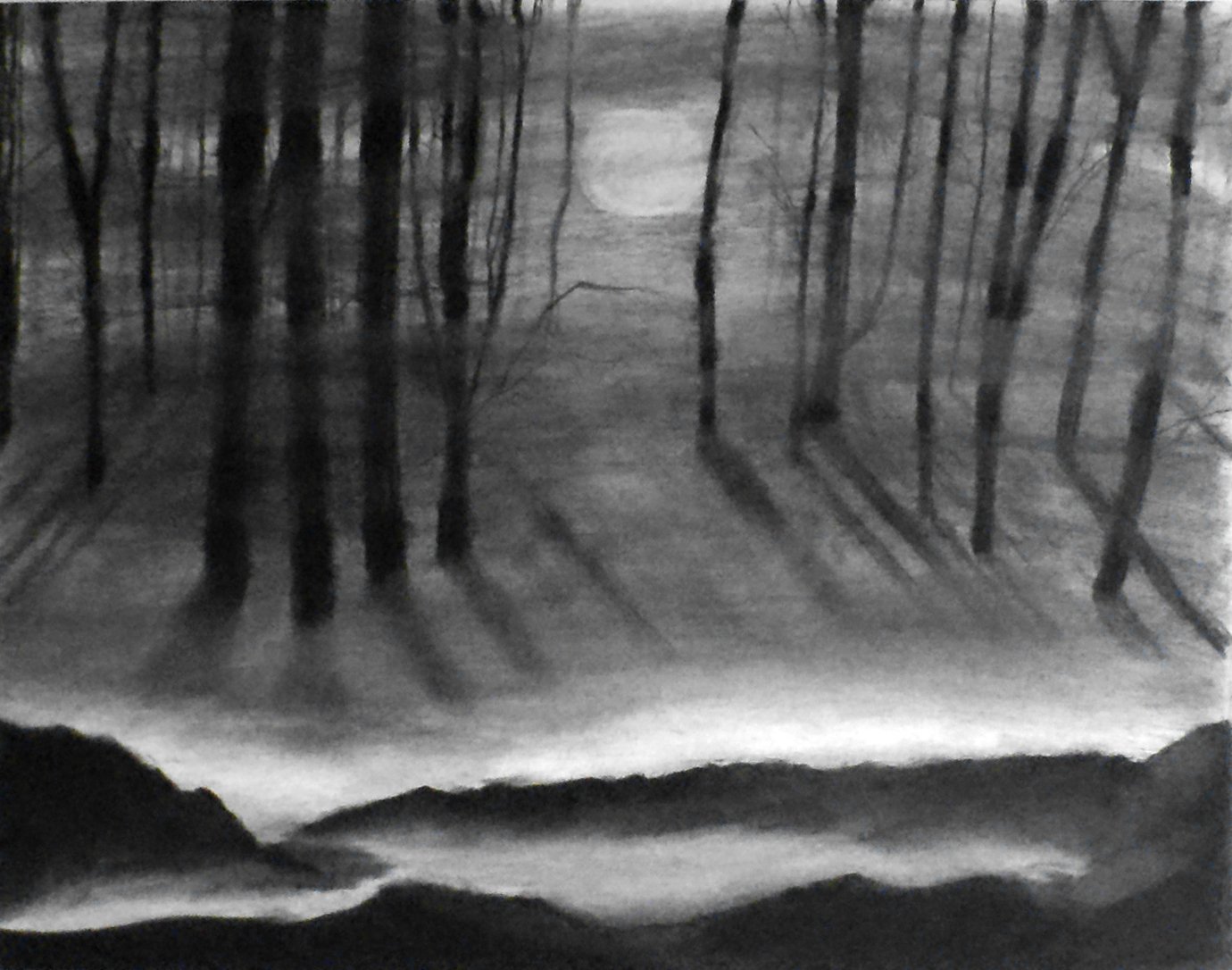
Capturing the Essence of Skies and Water
Sky Dynamics with Layering
The sky often sets the tone for a landscape drawing. Whether stormy or clear, sunrise or twilight, the sky can be a focal point full of emotion. Layering is a key technique; starting with lighter shades and adding successive layers of charcoal can create the complexity and subtlety of clouds, sunsets, or the blue of a clear day. A kneaded eraser can lift charcoal for highlights or to soften an area, adding nuance to cloud formations or the glow of the sun.
Reflective Surfaces and Water
Water in the landscape reflects the sky and surroundings, and capturing this interplay with charcoal can be challenging but rewarding. Reflections should mimic the shapes and tones of the objects they mirror but with subtle variations to suggest movement and the quality of the water’s surface. Using a light touch to suggest ripples or waves and a blending tool to create smooth reflections can convey the calmness or dynamism of water within the scene.
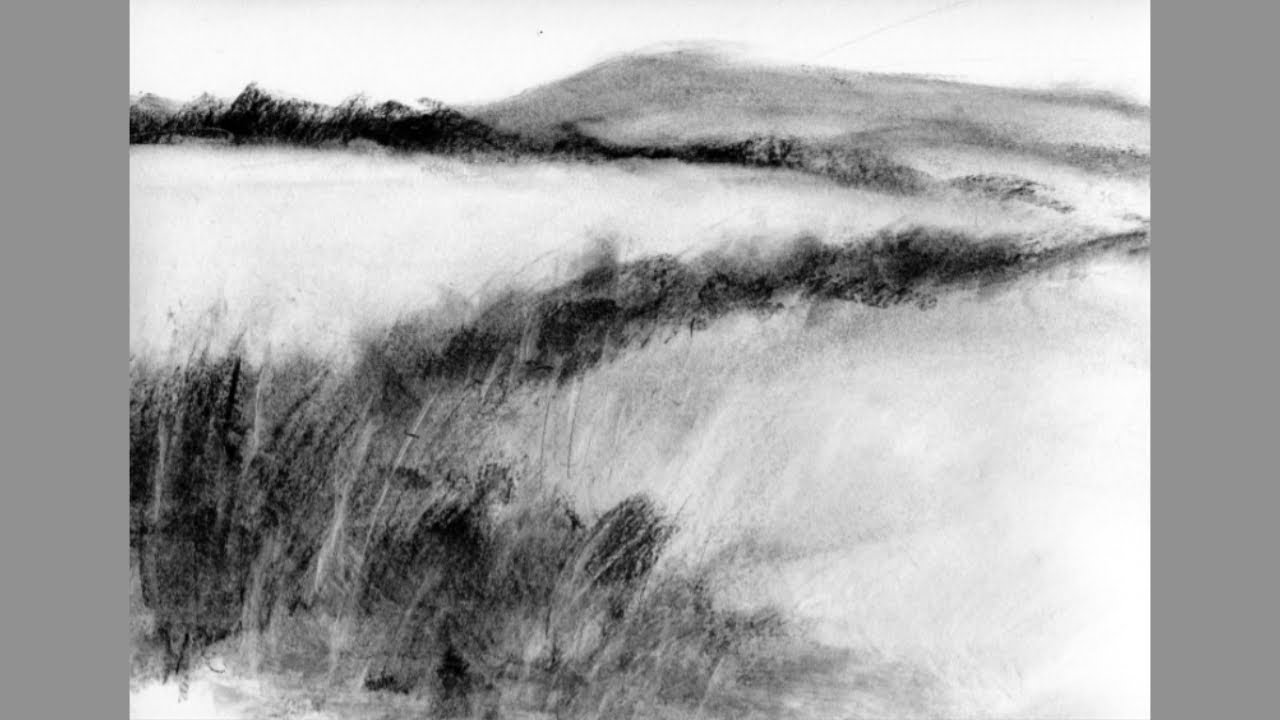
Fine Details in Vegetation and Texture
Creating Depth with Foreground Vegetation
Vegetation can be one of the most intricate elements in a charcoal landscape. To create a sense of depth, emphasize the texture and detail of the vegetation in the foreground. Short, varied strokes with a sharpened charcoal pencil can mimic grass blades or leaf clusters, while a broader, softer application can suggest distant foliage. These contrasts in detail help to draw the viewer’s eye through the composition, from the detailed foreground through the expansive midground to the misty background.
Textural Contrast for Realism
Texture adds realism and vibrancy to a charcoal landscape. Each element, from rock to tree bark, should have a distinct textural quality. Artists can use the edge of a charcoal piece for rough textures, or smudge and blend for smoother surfaces. By juxtaposing different textures, an artist can enhance the realism of natural elements and create a more engaging visual narrative.
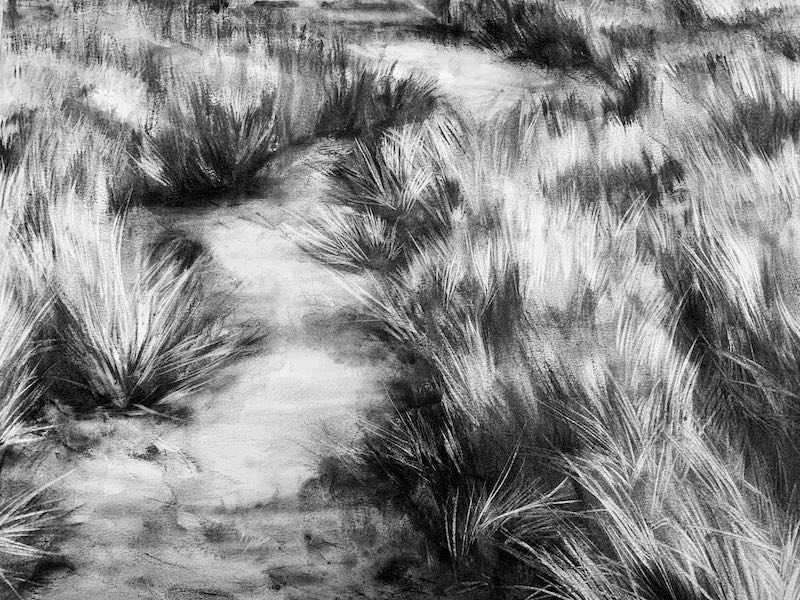
Mastering the Landscape with Advanced Charcoal Techniques
Embracing a Varied Approach
Sticking to one technique can limit the expressive possibilities of charcoal. Instead, use a mixture of methods. Combine sweeping gestures with detailed mark-making for a varied and dynamic approach. Varying the pressure of the application can yield a multitude of shades and effects, and learning when to blend and when to leave marks visible is key in mastering the medium.
Continuous Experimentation and Practice
Improvement in charcoal landscape drawing comes with a dedication to experimentation and practice. Each drawing should be an opportunity to try new techniques, to learn from both successes and failures. Studying the work of other artists and learning from their methods can provide new insights and inspiration. With time, these advanced techniques become intuitive, allowing for more fluid and expressive work.
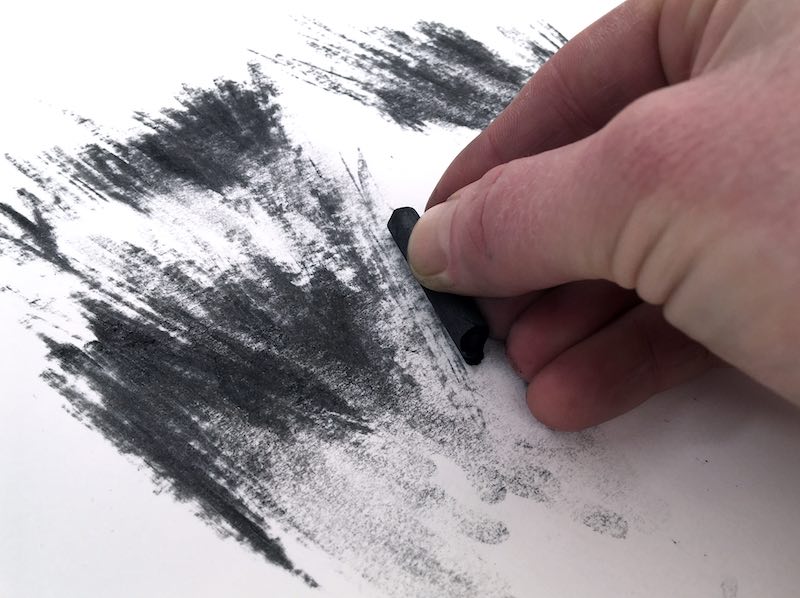
Refining Light and Shadow for Dramatic Landscapes
Manipulating Contrast to Guide the Viewer’s Eye
In landscape charcoal drawing, the interplay between light and shadow is not only important for creating form but also for directing the viewer’s gaze. Strategic placement of the darkest darks next to the lightest lights creates focal points in the drawing. These areas of high contrast grab attention, leading the viewer through the landscape. Artists should first identify where they want to draw the viewer’s eye before laying down these critical tonal contrasts.
Layering to Build Atmosphere
To create an atmosphere that breathes life into a landscape, layering becomes an essential technique. Starting with a textured paper as the base, artists can build upon the rough foundation with soft layers of charcoal. By adding more layers, one can gradually increase the density of shadows or the brightness of light-reflective areas, capturing the interplay of sun and shadow that is often observed in nature. Between layers, artists can use a clean blending stump or soft tissue to gently fuse the charcoal, softening the transitions and increasing the sense of airy atmosphere.
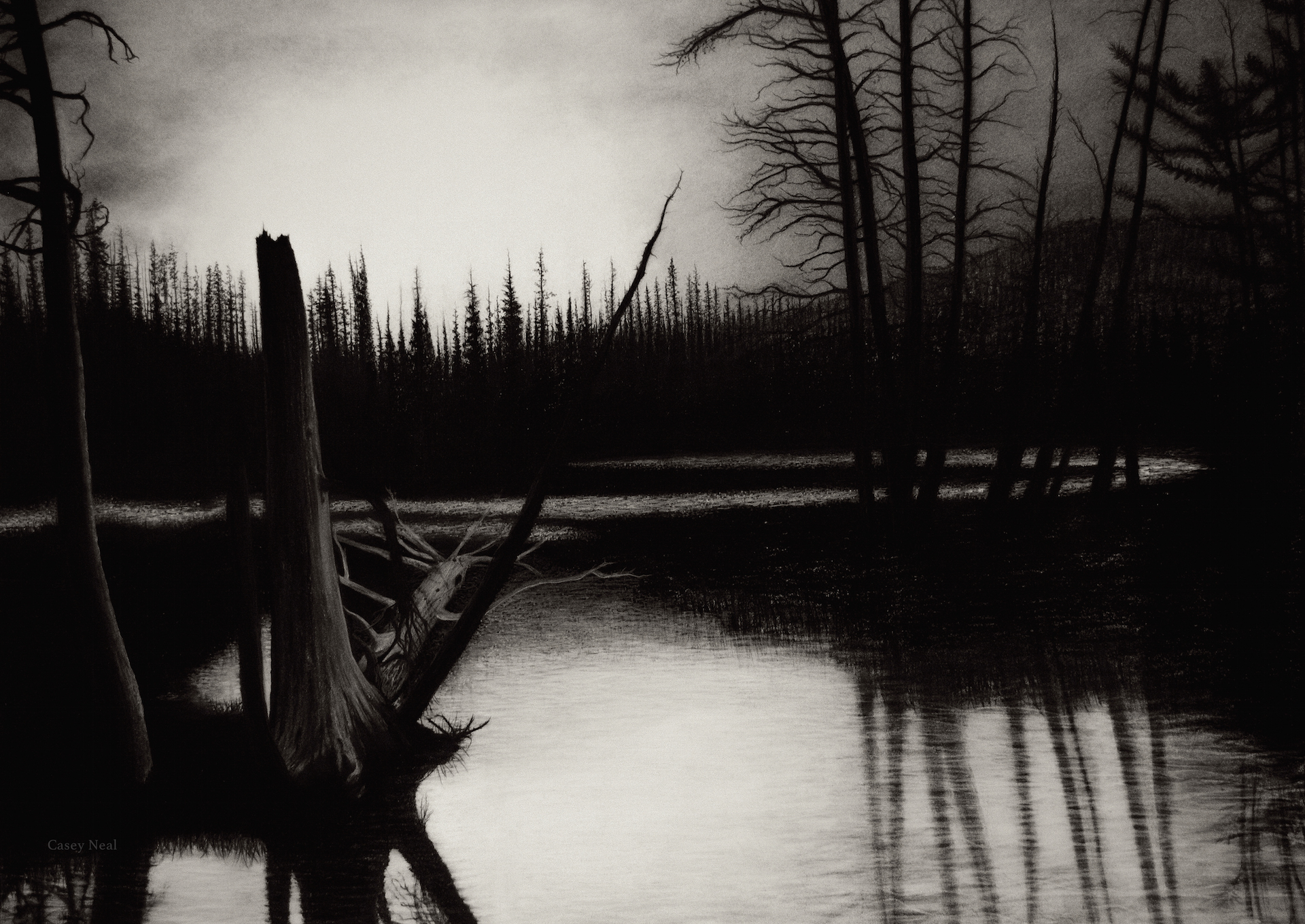
The Dynamic Use of Tools for Textural Effects
Variety of Tools for Versatile Marks
Charcoal drawing tools vary widely, from the chunky sticks of vine charcoal to the pointed precision of charcoal pencils. Each tool can create different effects and textures. An artist might reach for a charcoal stick to quickly fill in broad areas of shadow or use the edge of the stick to create sweeping directional lines that mimic grass or rain. For fine details, such as individual leaves or pebbles, a sharp charcoal pencil is indispensable. Artists must become familiar with the capabilities of each tool, understanding how to exploit their unique properties to enhance the textural palette of the landscape.
Crafting Custom Tools for Unique Effects
Sometimes, achieving a unique texture requires going beyond commercial art tools. Artists can create their own tools for special effects. For instance, crafting a blending stump from rolled paper can offer unique softening effects, while a piece of crumpled foil or leather can impart textured patterns when pressed onto charcoal. The openness to create and modify tools is what allows an artist to truly personalize their work, giving it a signature style that can’t be replicated with standard tools alone.
Advanced charcoal techniques offer landscapes rich in depth, emotion, and detail. Artists can exploit the tonal range of charcoal to convey beauty. They capture the dynamics of the sky and water with charcoal. They detail vegetation realistically to enhance their work. Artists embrace varied methods in their approach. Through this, they express the awe-inspiring beauty of the natural world. Their work is characterized by profundity and finesse. Success in charcoal art requires continual practice. An open mind to new ideas is also essential. Artists must have the courage to push the limits of their abilities.